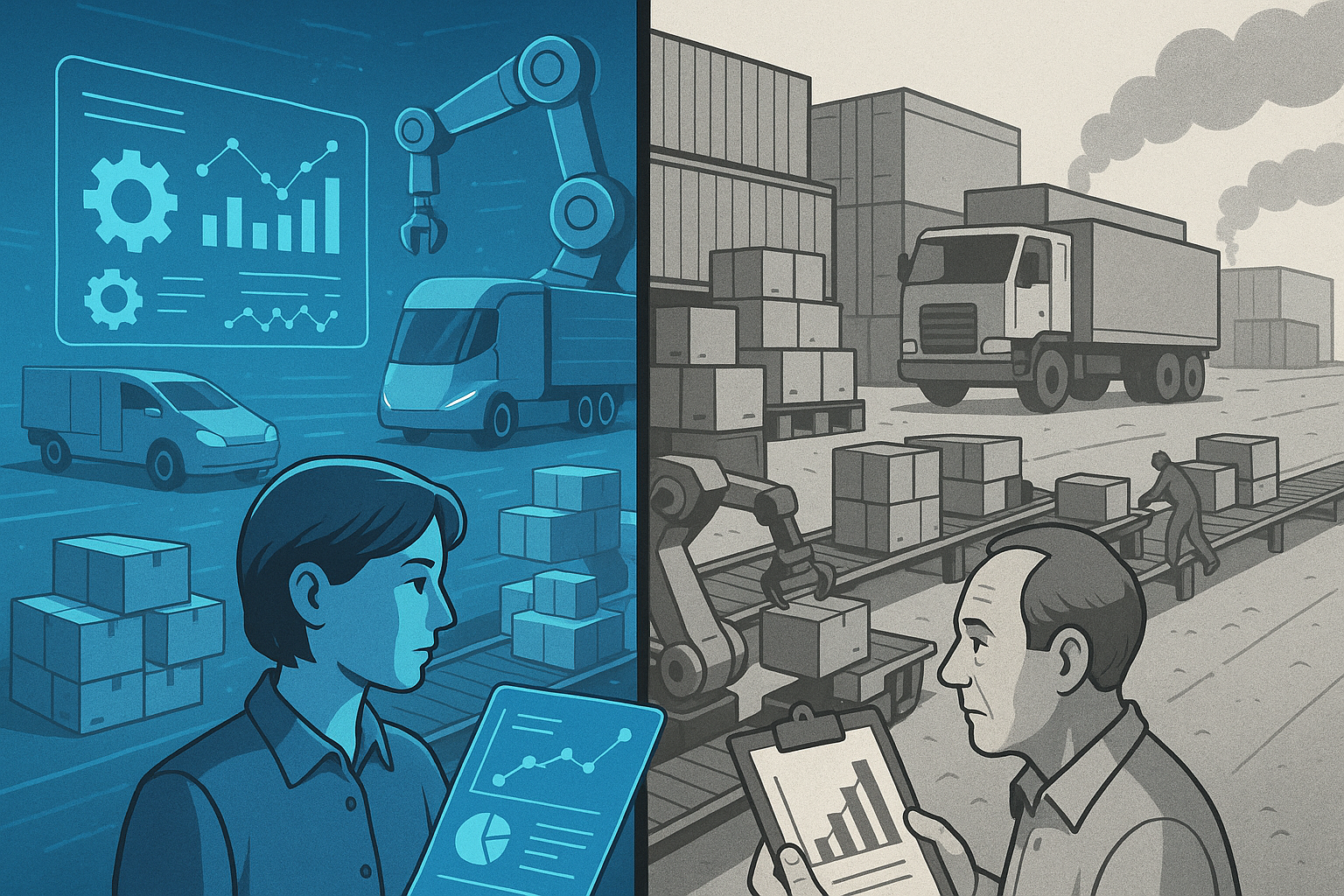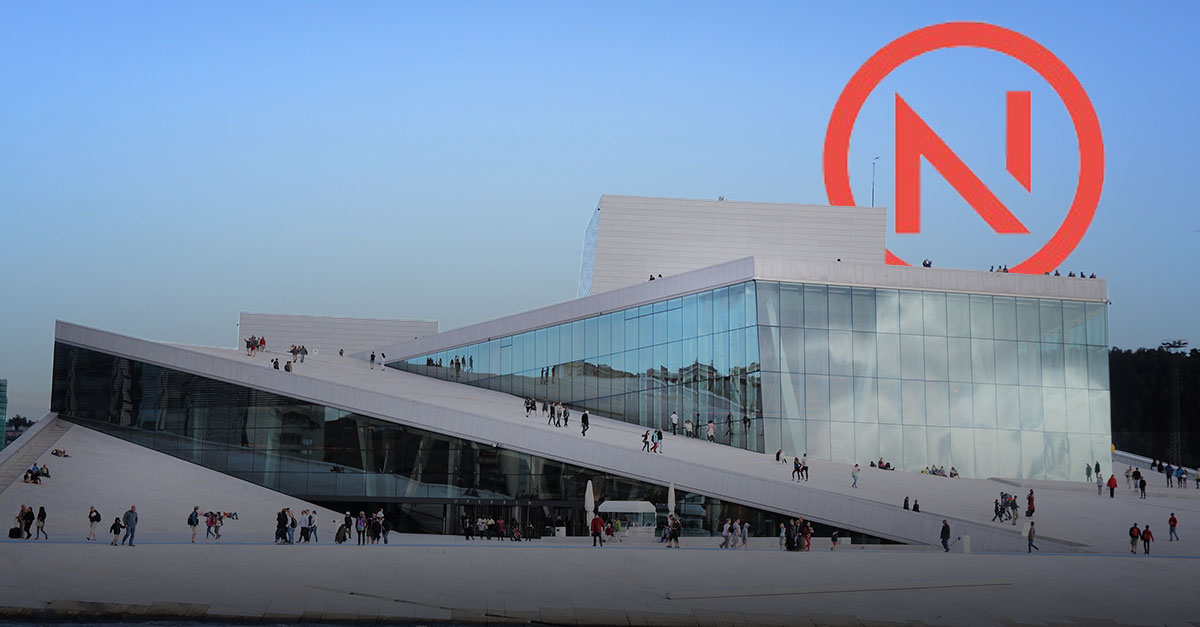
拡大する格差:サプライチェーンを進化させる企業とそうでない企業
サプライチェーン・プランニングの世界では、大きなギャップが生まれつつある。一方は、積極的に進化し、新しいテクノロジーに投資し、不確実性を受け入れ、弾力的で適応力のあるサプライチェーンを構築している企業である。もう一方は、時代遅れのプロセスやレガシーシステムにしがみつき、漸進的な変化で何とか足りるのではないかと期待している企業である。
実際のところ、格差は広がっている。そして、誰が勝つか分かりやすくなっている。
二つの道、二つの結果
地政学的不安、インフレ圧力、労働力不足、原材料のばらつき、気候の変動、顧客の期待の変化など、サプライチェーンはさまざまな混乱にさらされている。しかし、クラス最高の組織は単に生き残っているのではなく、繁栄している。
リーダー企業と後発企業を分けるものは何か?それは資本やデータへのアクセスだけではない。根本的に考え方が違うし、プランニングに対するアプローチも違う。

リーダーたちは何をしているのか
1.静的な予測よりも適応的なプランニングの採用
クラス最高の企業は、月に1回(または四半期に1回)のプランニングで最善を望むことは、もはや実行不可能であることを知っている。彼らは、決定論的な単一シナリオの予測を超えて、確率論的モデリングとAIを活用した適応型プランニングを採用している。
このような企業は、ketteQのような次世代のプランニング・ソリューションを使って、何千もの可能性のあるシナリオを数秒でシミュレートし、単に将来を予測するだけでなく、それに備えている。様々な結果を理解し、プロアクティブに調整することで、混乱に先手を打ち、上昇の機会を活用している。
2.プランニングをビジネスに組み込む
先進企業は、プランニングをサプライチェーンに限定したサイロ化された機能として扱っていない。その代わりに、Salesforce上のketteQのようなプラットフォームを通じて、プランニングを営業、オペレーション、財務、顧客サービスと統合している。これにより、単一の統一された真実のソースが作成され、機能横断的なチームが需要、キャパシティ、および実行について連携できるようになります。
プランニングが日常的な事業運営の一部になれば、アジリティは企業文化に組み込まれる。

3.Speed to Value
レガシー・プランニング・システムを導入する際には、長期間にわた り多額のコストがかかるのに対し、リーダーたちは、数年単位ではなく、数カ月単位 で結果を出すために、迅速かつ反復的なデプロイメントを優先している。彼らは、設定可能なワークフロー、再利用可能なコンポーネント、ローコード・インターフェイスを備えたketteQのようなクラウドネイティブ・プラットフォームを活用することで、セットアップ時間を短縮し、変更管理を簡素化している。
彼らは完璧を待つのではなく、スピード、学習、継続的な改善を優先する。
4.プランナーを置き換えるのではなく、AIで力づける
後発組は自動化によってプランニングが時代遅れになることを恐れるが、リーダーたちはAIを戦力増強剤と見なしている。エージェント型AIソルバーのようなツールは、プランナーを表計算のジョッキーから戦略的問題解決者へとシフトさせる。
プランナーは、データ操作に何時間も費やす代わりに、トレードオフの評価、コンフリクトの解決、スピード感のあるスマートな意思決定に集中する。AIはプランナーに取って代わるのではなく、プランナーを不可欠な存在にするのだ。

5.データを行動に変える
トップクラスの業績を上げている組織は、データが行動を促してこそ役に立つことを理解している。彼らは、リアルタイムのエンドツーエンドの可視性に投資し、その可視性を、影響をシミュレートして即座に提言を生成できるプランニング・エンジンに直結させている。
このクローズド・ループ・アプローチにより、サプライチェーンの洞察は単に観察されるだけでなく、実際に測定可能な成果をもたらすために活用されます。
後発組がまだやっていること
残念ながら、多くの組織は現状維持のサイクルから抜け出せないでいる。彼らは
- 手動プロセスと静的スプレッドシートに依存し続ける
- 通信できない断片的なツールに閉じ込められている
- 孤立した部署で、相反するデータを用いてプランニングを行う。
- ソフトウェアの導入サイクルが12~36カ月に及ぶことに悩む
- 混乱が起きてから対応する
- 漸進主義を実践し、微調整を真の変革と勘違いする。
リーダー企業は、適応性とスピードのためにサプライチェーンを再構築しているが、後発企業は、1つの予測を調整し、1つのモジュールをアップグレードし、1度に1つの機能を再編成するという、漸進的な考え方にとらわれていることが多い。しかし、漸進主義は、競争力を積極的に損なう一方で、安全だと感じるかもしれない。
一夜にして状況が変化する世界では、漸進主義や小さな前進は課題の大きさに追いついていない。必要なのは、より優れた表計算ソフトや少し速くなったバッチジョブではなく、プランニングの方法を根本的に見直すことだ。
格差は広がるばかり
プランニングのリーダー企業と後発企業の間に広がる溝は、テクノロジーだけの問題ではない。それは、グローバル・サプライチェーンの進化の次の段階で、誰が生き残り、繁栄するのかということである。
サプライチェーンを進化させている企業は、より迅速な対応、より高いサービスレベル、より低いコスト、より高い利益率といった、永続的な優位性を築いている。サプライチェーンを進化させている企業は、より速いレスポンスタイム、より高いサービスレベル、より低いコスト、より高い利益率といった、永続的な優位性を構築している。
進化しないものは?永久に遅れをとる危険性がある。

最終的な考察
サプライチェーンはもはや単なる間接部門ではない。サプライチェーンは競争上の武器であるか、あるいは致命的な脆弱性である。そして、すべての企業は選択しなければならない:
進化するのか、それとも取り残されるのか。
今日、大胆な行動を起こし、アダプティブ・プランニング、エージェント型AI、クラウドネイティブ・アーキテクチャを採用している企業は、プランニングが迅速で、即応性があり、ビジネス成果に深く連携する未来を創造している。
それは単なる進化ではない。サバイバルなのだ。
アダプティブ・サプライチェーン・プランニングの決定版ガイド」を読んで、プランニングの進化における次のステップに進む方法を学びましょう。





